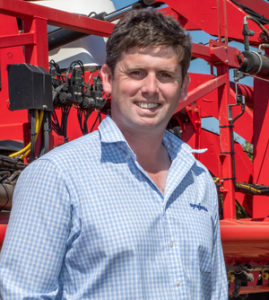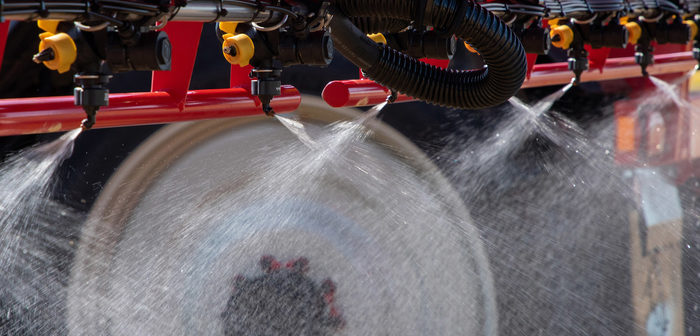Potato growers should switch to new Syngenta 3D ninety nozzles to ensure more timely blight applications this season – and achieve the best possible results, advocates the company’s application specialist, Harry Fordham.
He highlights the 90% drift reduction nozzles create the optimum droplet spectrum for coverage throughout the crop canopy, including lower leaves and stems where micro-climate conditions can be particularly humid and conducive to blight infection.
Three seasons of independent research in the Eurofins evaluation trials have shown the 3D ninety nozzle has repeatedly performed the most effectively for blight control with Revus and Amphore Plus programmes.
“More consistent coarser droplet size of the 3D ninety has the momentum to penetrate deeper into the canopy, compared to more drift susceptible fine droplets,” he advised. “When that is combined with the 55 degree angle of the nozzle it is especially effective at treating larger crop canopies, such as potatoes and sugar beet.”
The 05 and 06 sizes of the 3D ninety that are most suited to potato blight applications – applying around 200 l/ha water volume at 12 – 14 km/hr – offer 90% drift reduction when operated at up to 5 bar pressure.
Coverage right through the canopy
“That provides sprayer operators with the opportunity to fine tune application techniques to achieve spray coverage right through the canopy, while still providing exceptional drift control and ensuring the maximum protection reaches the leaf surface,” added Mr Fordham.
The industry standard demonstrates 90% less drift from the nozzles, compared to a standard flat fan nozzle operated in the same conditions.

Harry Fordham
Persistently windy weather patterns over recent seasons have typically seen just three to five days per month of ideal spraying conditions, particularly in later months of the blight control season.
“Reducing drift is essential to ensure spray hits the intended target and is not lost out of the field,” highlighted Mr Fordham. “Crucially for blight controls, it will also minimise effects of wind gusts that shift the spray pattern and could leave patches of crop less well protected from blight spore infection.”
For optimum leaf coverage he advised the 3D ninety nozzles should be fitted with the angle alternating forwards and backwards along the spray boom. The ideal set up is operating at a pressure of 2-3 bar, nozzle height of 50 cm above the crop and working at a speed of 12 km/hr or less.
In Revus application trials at Eurofins – that were artificially inoculated with aggressive blight strains and irrigated to maximise disease development – the 3D ninety nozzle applications kept out blight entirely throughout the treatment season, compared to 3% to 5% infection creeping in with conventional flat fan nozzles.
However, 21 days after the treatment programme finished, blight was 80% faster to develop in plots treated with flat fan or Syngenta Potato nozzles, compared to those that had been sprayed using 3D ninety nozzles through the season.
The Syngenta 3D ninety nozzle is now available to buy in the 05 size most suited to potato application, along with an introductory offer providing a 50% saving* on costs.




